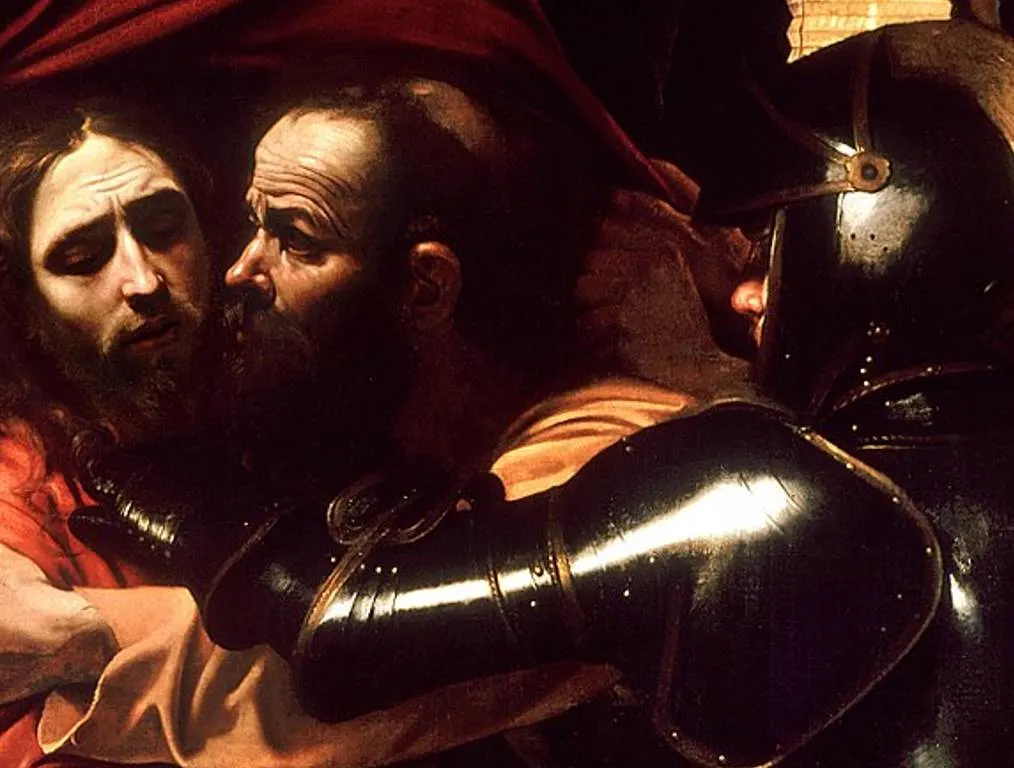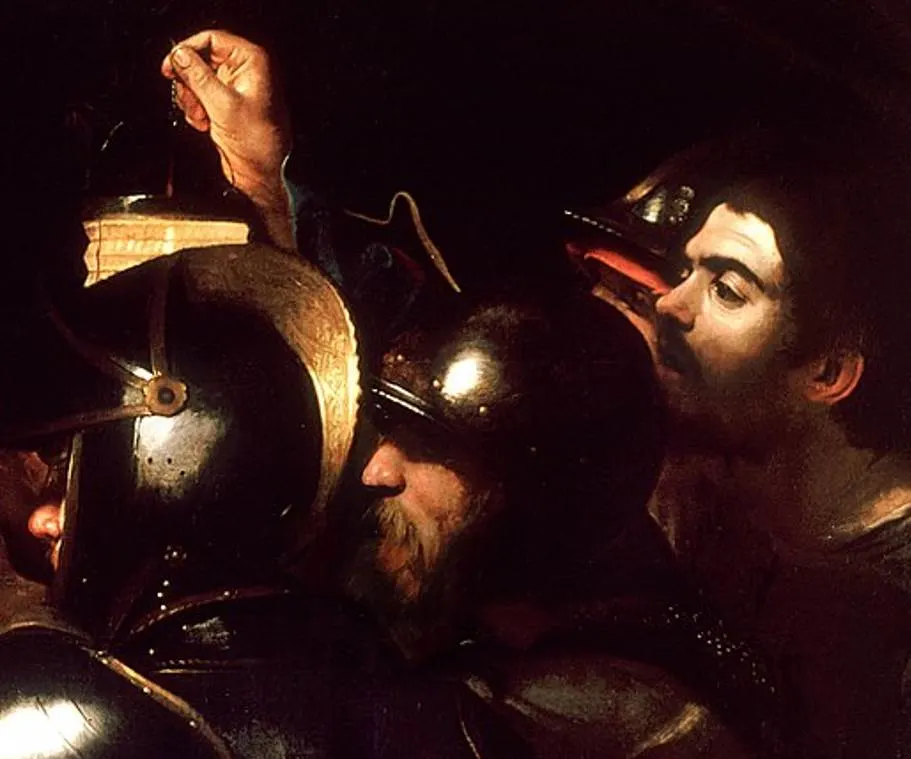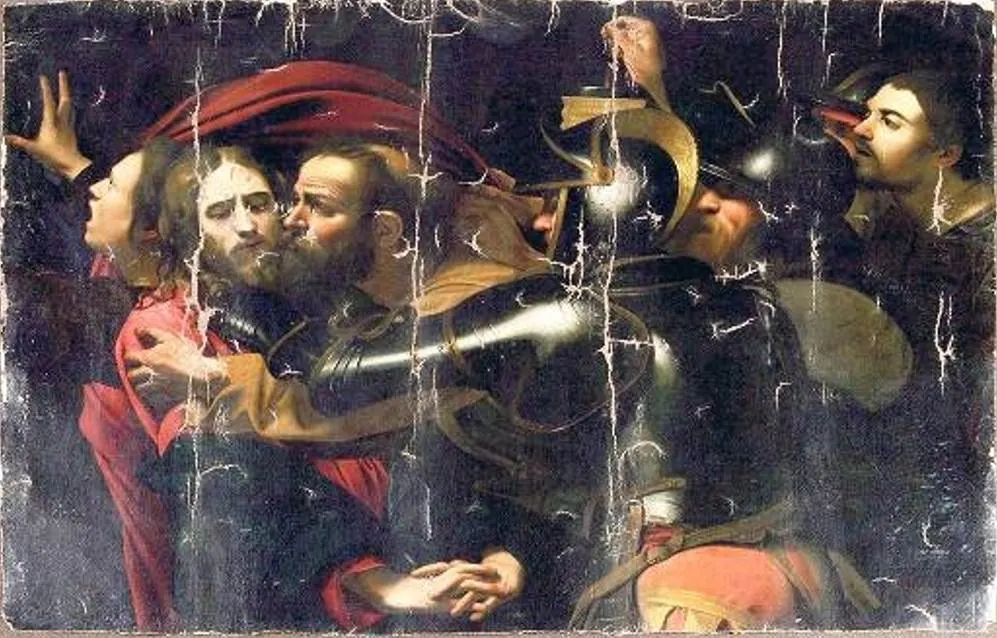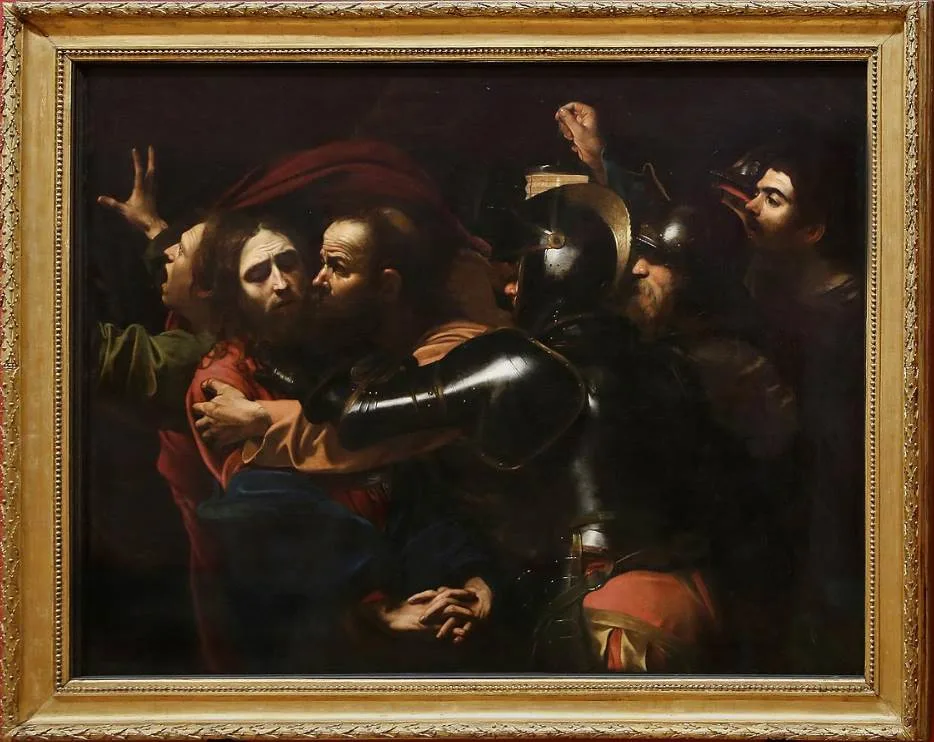The Passion of Christ is the name given to a series of events that are extensively documented in both the Old and New Testaments.
Many of these events have served as a great inspiration for artists from just about every art movement since the Roman era.
Michelangelo Merisi (1571-1610) was one of the most controversial artists of the Baroque era but managed to capture several important moments in Christianity in his intriguing paintings.
In this article, you’ll discover some of the most interesting facts about The Taking of Christ by Caravaggio, a painting that depicts a pivotal moment in history.
1. It was completed shortly after Caravaggio achieved his breakthrough
I already referred to Caravaggio as one of the most controversial figures of the Baroque era, but this can easily be extended to the entire history of art.
Not only did he have to flee from the city of Milan as a young aspiring artist in dubious circumstances, but he also committed a murder which meant he had to flee from Rome as well.
He had a hard time establishing himself in Rome initially, but this all changed when he started getting attention from rich patrons in the city.
When Cardinal Francesco Maria del Monte commissioned The Martyrdom of Saint Matthew and The Calling of Saint Matthew (both 1600), it transformed the young Italian artist into a superstar.
The Taking of Christ was commissioned by a rich nobleman from Rome named Ciriaco Mattei of the House of Mattei in 1602 and he completed it the same year.

He already completed another famous painting titled “Supper at Emmaus” for the same patron a year earlier in 1601.

2. It depicts the moment that Jesus was arrested by Roman soldiers
The painting depicts a moment of shock and chaos that can be described as one of the most important moments of the passion of Christ.
We can see a snapshot of the second after Judas kissed Jesus to identify him to the Roman soldiers. They instantly arrest him on the spot, an event that led to his death sentence and subsequent crucifixion.
This arrest took place at Gethsemane, a garden at the foot of the Mount of Olives in Jerusalem. Jesus and his disciples went here to pray shortly after the Last Supper.

3. Caravaggio integrated his typical heavy use of chiaroscuro into this painting
It’s pretty much impossible to see any of the surroundings because the background is completely dark. A light source comes from outside of the top left corner of the canvas.
A secondary light source comes from the man holding the lantern on the right, and both sources allowed Caravaggio to integrate his typical use of chiaroscuro.
This style, also known as “Tenebrism,” was the trademark of the artist and it allowed him to masterfully highlight certain elements.
In The Taking of Christ, this includes the shiny armor that the Roman soldier who is arresting Jesus is wearing, as well as the wrinkles on Judas’s and Jesus’s faces.

4. Did Caravaggio include a self-portrait in The taking of Christ?
There are a total of seven figures in this painting, all squeezed together in a compact composition.
3 of them are Roman soldiers (one is barely visible to the right), Saint John is screaming in agony to the left of Jesus, and another man is holding up a lantern.
Some art historians have suggested that the man holding up a lantern is a self-portrait of Caravaggio in which he represents himself as Saint Peter.
Saint Peter was the first to betray Jesus by denying him and eventually returned to Rome to face the same consequence as Jesus Christ.
The lantern might be a metaphor for Saint Peter shining his light on the world (he went back to Rome to spread the word about Jesus Christ) after his betrayal.

5. The central part might have been inspired by a woodcut from a German artist
One of the leading Renaissance artists in the northern part of Europe was a German artist named Albrecht Dürer (1471-1528).
He extensively traveled to Italy and met the greatest artists of the High Renaissance there, including the likes of Raphael and Leonardo da Vinci.
He produced several series of woodcuts that were spread all around Europe, including a small and great series of subjects related to the Passion of Christ.
The central part of Taking of Christ by Caravaggio looks very similar to a woodcut print that was published by Dürer in 1509.

6. The painting was copied extensively by contemporary artists
Caravaggio’s reputation only grew in the early 17th century as he produced more and more fascinating paintings.
This particular work was very popular and copied by numerous contemporary artists. One version located at the Odesa Museum of Western and Eastern Art in Ukraine was believed to be an authentic copy by the artist himself.
It wasn’t until it was stolen in 2008 and recovered in Germany shortly after that it was examined. It was determined to be a copy completed in 1626 by another unknown artist named Giovanni di Attili.
The artist received 12 scudi for this work which was commissioned by Asdrubale Mattei, the brother of the man who commissioned the original from Caravaggio.

7. How big is The Taking of Christ by Caravaggio?
The artist produced several monumental Baroque paintings that served as altarpieces or to decorate chapels.
Some remain in situ today such as The Calling of St Matthew at the Contarelli Chapel in the church of San Luigi dei Francesi in Rome.
The Taking of Christ by Caravaggio is a medium-sized oil on canvas painting that has dimensions of 133.5 × 169.5 centimeters (52.6 × 66.7 inches).

8. Where is the painting located today?
The painting was believed to have been lost for well over 2 centuries until it resurfaced in the main residence of the Society of Jesus in Dublin, Ireland.
This rediscovery happened in the early 1990s and it was officially announced in November 1993. Remarkably, Caravaggio’s masterpiece had been hanging in the dining room of this residence since the early 1930s.
The reason why was an erroneous attribution to Gerard van Honthorst, a Dutch artist and follower of Caravaggio in the 17th century. Remarkably, this wrong attribution was already made when it was still hanging at the palace of the Mattei family in Rome.
The Mattei family sold it as a work of Van Honthorst in 1802 to a Scottish Politician and art collector named William Hamilton Nisbet. It remained here until 1921 when it was sold to an Irish art collector who donated it to the Jesuits in Dublin.
Today, the painting is on permanent loan to the National Gallery of Ireland in Dublin where you can admire this magnificent work of art.

